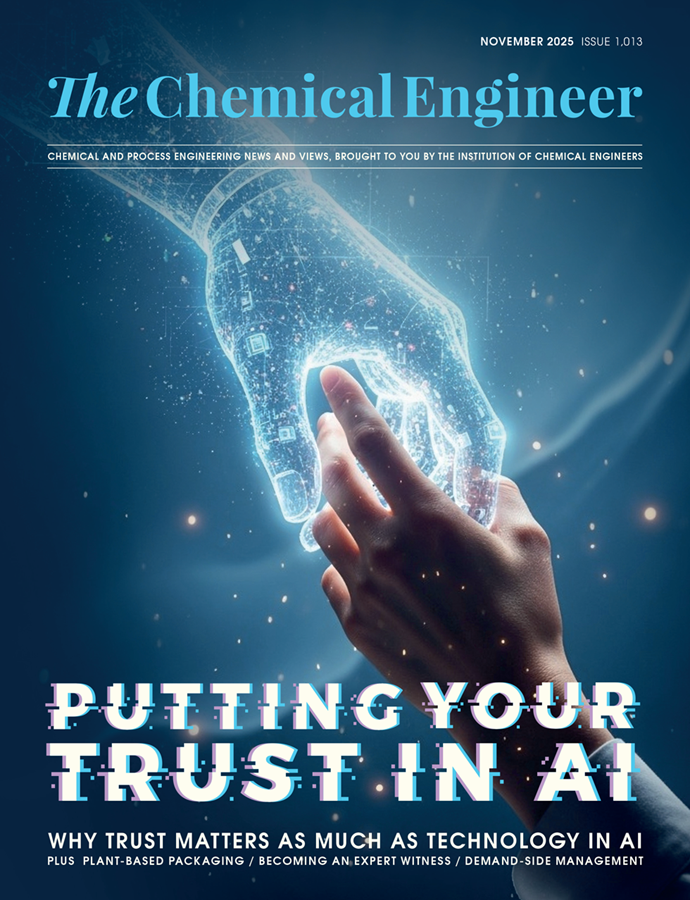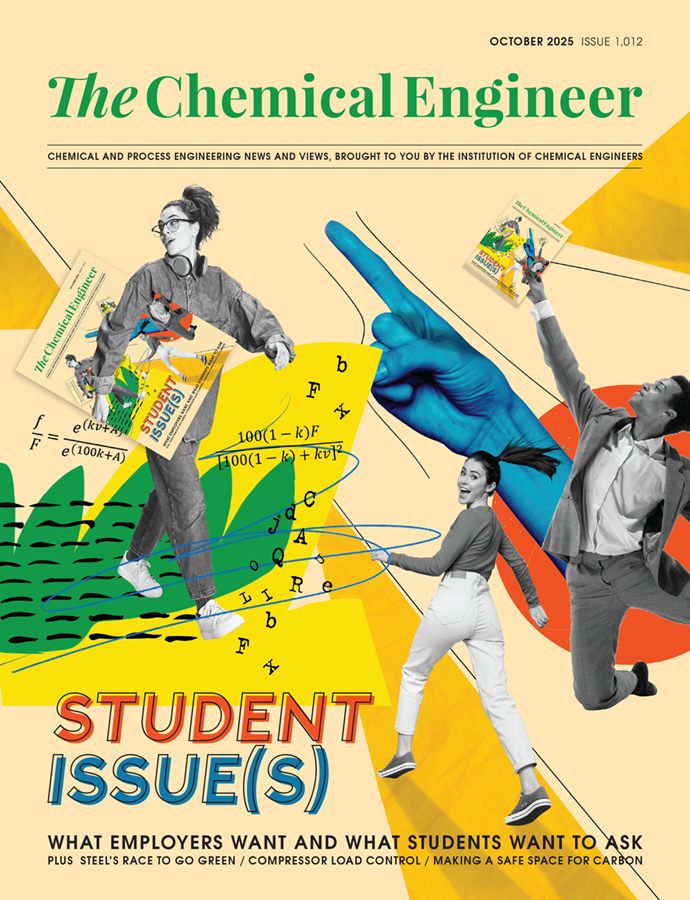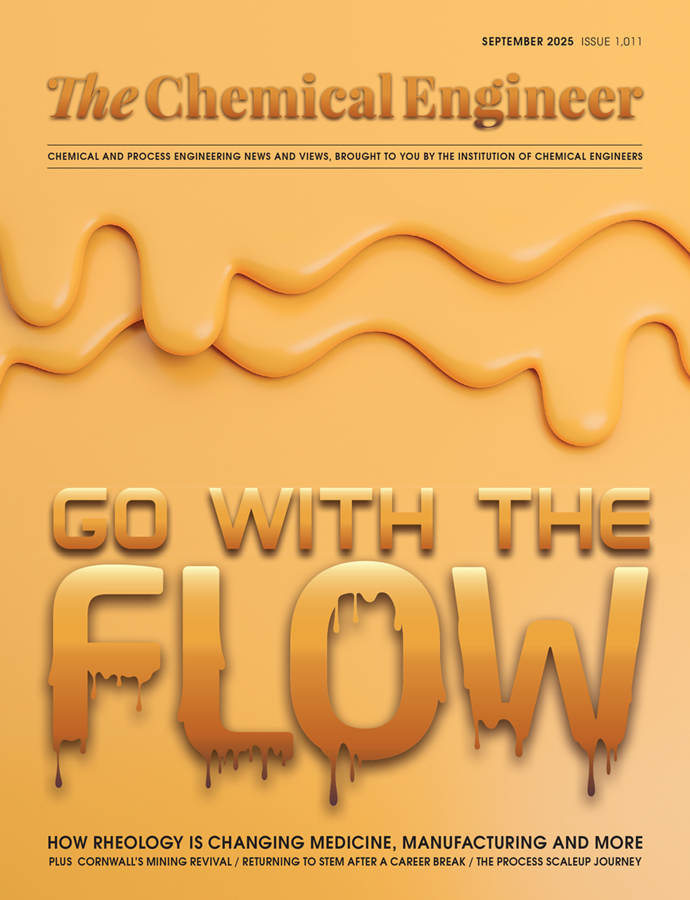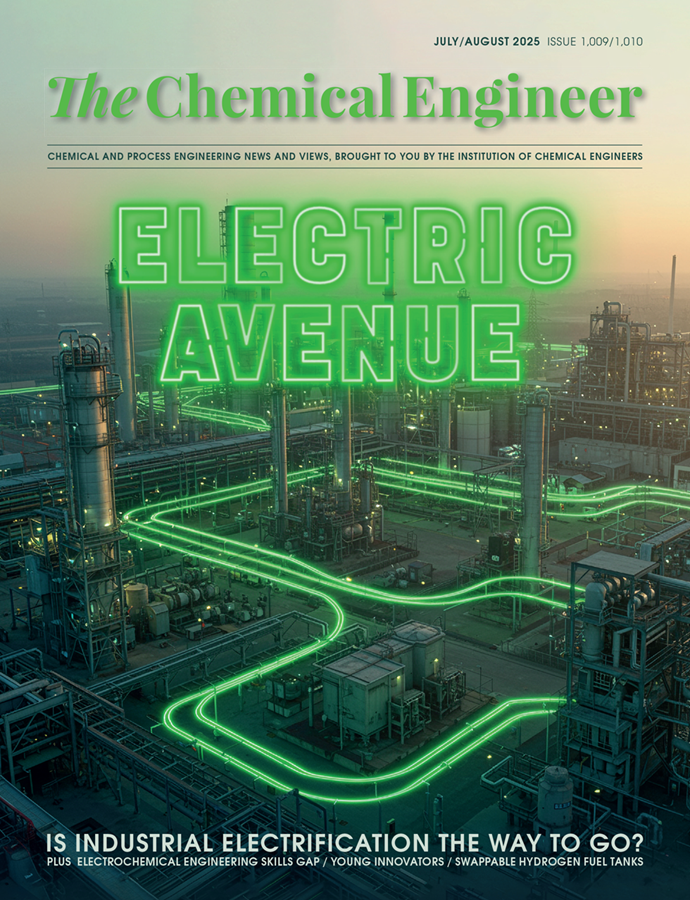Ethics Series - For the People: By the People

Mark Miodownik discusses ethical research goals and the power of citizen science
ONE day in 2018 a schoolkid asked me a question that changed the direction of my research programme. That day I was giving a talk at a primary school about materials science and engineering; this involved me doing all sorts of exciting demonstrations such as hammering a nail into a piece of wood using a banana that I had frozen using liquid nitrogen.
This caused uproar, whooping, and a large amount of over-excitement in the room. I egged the kids on. “So”, I said, “If you ever find yourself needing a hammer but can’t find one, you can just use a banana”. A hundred primary school children jumped to their feet and screamed in unison at the shear fun of it all. My eyes flicked to the teachers who were trying to restore order. The kids were told sternly if they didn’t sit down they would have to leave. I tried to calm the situation by switching gears - I asked the children if they had any questions. Lots of hands shot up and I answered them in turn, but then one question floored me: “What are you doing about plastics in the oceans?” I changed tone as I addressed this serious problem, I made it clear that I thought plastics were not evil materials, it was the way we treated them that was the problem. We should not waste them, we should recycle them, I stressed. But the kids were too smart for a formula answer. Having just seen me demonstrate the marvellous power of materials science they wanted to know what new materials I was inventing in my lab to help solve plastic pollution. I said that plastic waste wasn’t my specific research area. They fell quiet. This was baffling to them.
Afterwards I couldn’t quite shake the feeling that I had disappointed the children. What is the point of exciting them about the possibilities of materials science and how we can engineer a better future if I myself was not working on the important problems I wondered. I agonised about this some more over the next couple of days and came to the conclusion that I needed to address the ethics of why I was not working on plastic waste. We all have choices about what we work on and who we work for. Some people have more choices than others no doubt, but in my case I felt that as a permanent member of academic staff in a university I had more choices than most. So why wasn’t I doing the right thing and working one of the most urgent environmental problems of our time? My instinctual answer was that I don’t have the skills, the knowledge, or a research record in this area, which was true, but also seemed a bit defeatist. If this was war, I thought, we would all be dropping our current projects to do whatever was necessary to help defend the country, so why was I not prepared to do the same to help defend the environment? What was the ethical thing to do I wondered.
After a few weeks of prevaricating, I came to the conclusion that since plastics are core materials science and engineering, we as a research community needed to own the problem. I decided the ethical thing to do was to pivot my research to work on plastic waste issues. The next decision I had to make was harder – how would I actually do it? Up until that point my knowledge of plastics was general, my understanding of waste processing was superficial, and I had no idea about the government policies around plastics. I decided to find out more and managed to persuade the BBC that we should work together to make a radio series exploring the problem of plastic waste. The idea was to unpick how we as a society, and science and engineering in particular, had ended up polluting the oceans with this wonderful material. The resulting three-part radio series is called Plastic Fantastic (the podcast is still available on the BBC iPlayer website). Making the programmes educated me on how many of the complexities of the plastics issues were rooted in scientific, social and economic history.
I decided the ethical thing to do was to pivot my research to work on plastic waste issues. The next decision I had to make was harder – how would I actually do it?
A complex history
Plastic started out as a miracle material in the early 20th Century. Celluloid became synthetic ivory first before finding an even bigger market replacing glass as the substrate for photography. This made cameras lightweight, portable, and cheap; democratising photography. But celluloid made an even bigger contribution as the flexible film of motion pictures, creating a new visual culture, the movies. More plastics followed, changing the way we lived in almost every way, from footwear to furniture, from telephones to tennis rackets.
Then plastics started to be used in single-use items such as packaging, and it is at this point our relationship with them changed. No longer did we see plastics as marvellous and miraculous materials, we saw them as cheap and disposable. In the latter part of the 20th Century, plastics became a by-word for a throw-away culture. Only there was no “away”; because of their very stable chemical structure they did not biodegrade or dissolve in water. These, of course, were the very properties that made them so valuable as packaging materials and made them so effective in reducing food waste. But once they had been used they should never have been allowed to be discarded, because they stay in the environment for a hundred years or more. But as a society we loved the convenience too much and so governments, industry and the public collectively and intentionally ignored the problem of plastic waste.
A multidisciplinary approach
Discovering the complex history of the problem convinced me that a multidisciplinary approach would be the only way to make a significant contribution to the problem of plastic waste. So I met up with colleagues from different disciplines such as chemistry, chemical engineering, biochemical engineering, economics, environmental sustainability, and behaviour change. I found that, like me, they were not working on plastic waste because it was not their research focus. But they were open to it; more than that, they were enthusiastic. After small number of meetings we agreed to work together to seek research funding. In less than a year we were successful and we set up the UCL Plastic Waste Innovation Hub together.
The next issue we faced was how to be more than the sum of our parts. We all had different skills, different disciplinary approaches and were used to solving problems where those approaches worked. But the problems of plastic waste are at the interface between these disciplinary boundaries. To make progress we needed to understand each others’ approaches and how they might be used together. We decided to meet together every week to discuss not just experimental progress in the lab, but to share our different disciplinary perspectives in understanding the problems of plastic waste. In other words we were sharing our thinking and learning from each other on a weekly basis. We regularly invited industry professionals, supermarket representatives, environmental researchers, and the public to these meetings to talk to us directly about the problems of plastic waste. After six months of doing this we became a research team unlike any other I have experienced. Intrinsically multidisciplinary, we had a unity of purpose and a set of research goals that was closely informed by the public and industry.
The plastic waste topic that we focused on was biodegradable and compostable plastics, because it was the area that the public felt most positive about but also the most confused about. We were also working with many companies who were innovating in this area and all who needed help. Everyone wanted to know whether these types of plastics were part of the solution to plastic waste. We began chemistry and biochemistry experiments; we started doing life cycle assessment calculations; we devised behaviour change experiments; and we analysed the tax and investment incentives and obstacles of the sector. We continued to meet every week to report to each other and discuss. In our discussions it emerged that there was a new technique for gathering real-world data on the efficacy of these types plastics that was perfectly suited to gathering the data that was missing from all the analyses. This technique is called citizen science.
Citizen science
Citizen science is a method of doing science with the public by using them to collect and analyse data. The beauty of citizen science is that thousands of people can take part, so it is ideal for problems that need wide-scale data collection. For instance, citizen science is used to do annual wildlife data collection to monitor the populations of birds and insects across the country. Such data collection would otherwise be very expensive and difficult to accomplish by a single research team. Using the public to collect data of course has drawbacks, such as the inevitable inaccuracy of some individual data – a person may incorrectly identify a type of bird or an insect, or make a mistake recording that data. With good experimental design these issues can be minimised and are mitigated by statistical analysis of the huge data sets that are collected. In the case of biodegradable and compostable plastics there had been a sudden upsurge in the number of these plastics being sold to the public as replacement for conventional plastics. For instance, newspapers and magazines started to be wrapped in plastics films that stated they were “100% Plastic Free” or “100% Biodegradable” or “Home Compostable”. Such statements were also being applied to compostable take-away packaging, disposable cutlery and teabags. Were these materials better for the environment? Did the public understand how to correctly dispose of these plastics? Would these plastics biodegrade in a home composter or any other environment? To answer these questions we needed data on the public’s understanding and behaviour in response to these messages. We needed to know where they put this packaging and if they put it in their home compost bin did it actually biodegrade or not. Citizen science was a perfect way to obtain this data from homes across the whole country.
We launched our citizen science project – the “Big Compost Experiment” – in 2019. The study was designed to facilitate a wide range of participant involvement. The format consists of a publicly-accessible website (www.bigcompostexperiment.org.uk) containing a 5-minute online survey, and an optional home composting experiment facilitated through an online personal login facility. All the results are published on the site for all to see, including before-and-after pictures of biodegradable plastics from people’s back gardens all over the UK. The website also contains additional educational information and links on biodegradable plastics and composting, and a social media blog, to raise public awareness of plastic waste issues. A range of participant recruitment methods was used in order to address data bias and to engage a wide range of participants from groups frequently excluded from participation in scientific activities, such as people from deprived communities, or specific ethnic groups. These methods include interviews on national and regional radio, articles in national charity and organisation magazines, publicity on social media platforms, and events at primary schools, I am particularly happy to say, since they kicked off this research in the first place.
The Big Compost Experiment has been going for more than two years and in that time we have had more than 9,000 citizens take part, and they have completed more than 1,300 home compost experiments. We publish open access analysis of the data every 3 months on our website, which is regularly featured in the media. So far we have found that most biodegradable plastics do not degrade fully in home composters, including those designed and certified to be “home compostable”. As a result The Guardian newspaper and many other organisations have stopped using biodegradable plastic film to package their magazines. We submitted a policy briefing for the House of Commons on compostable and biodegradable plastics to inform the Environmental Bill’s quantitative targets for compostable packaging. We have also held many public briefings on compostable and biodegradable plastics on Zoom.
This work led us to examine the use of compostable and biodegradable plastics in other sectors, such as tree shelters. The use of tree shelters is standard practice in woodland and the countryside to protect tree saplings from predation by animals such as deer and rabbits. The shelters tend to be made from plastics such as polypropylene which are inexpensive especially when compared to the cost of seedlings. The problem is that the tree shelters disintegrate over time and become plastic waste that harms wildlife and pollutes the environment. Could biodegradable tree shelters solve this problem we asked? We worked with the Woodland Trust to collect data and do a life cycle analysis. Our analysis showed that biodegradable tree shelters do not work well enough yet to be a better solution than using no tree shelter at all.
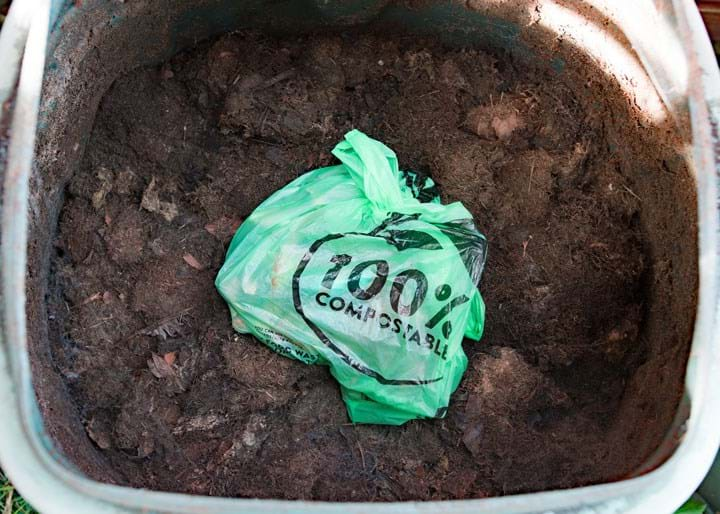
The beauty of citizen science is that thousands of people can take part, so it is ideal for problems that need wide-scale data collection
Progress through collaboration
What the experience of setting up the Plastic Waste Innovation Hub has taught me is that although moving into a new research area to address a research problems that the public instigates is very intimidating, it is possible. No-one expects you to single-handedly solve the problem on your own by making some genius invention. Most important problems are not solved this way precisely because the problems are so big they involve society, business, and governments and require solutions that allow everyone to work together. In their education scientists and engineers are fed a diet of examples where the genius of a single person is credited with changing the world by working away alone in a lab. These stories are almost always a fiction but they are fiction we as a profession still largely endorse despite our dedication to the truth. Medals and prizes are handed out to individuals, but rarely to groups and collaborations even though that is really how we make progress. The Plastic Waste Innovation Hub is an example of that kind of collaboration. It required us all to be to be open to learn, to be open to share and to listen, and to include all of the stakeholders in the research, including the public. It isn’t because the public pays for the research through taxes that makes them entitled to be part of the research process. As I hope I have shown in this article, when we include a diverse range of the public at every stage in the process we end up prioritising different outcomes. Plastic waste research is a very good example of this; it wasn’t governments, or research councils, or scientists who made solving plastic waste an important societal issue, it was the public outcry as a result of David Attenborough’s BBC TV series Blue Planet. The solutions need to work for society, and the environment and businesses and so all of these sectors need to be represented in the research process from start to finish.
It wasn’t governments, or research councils, or scientists who made solving plastic waste an important societal issue, it was the public outcry as a result of David Attenborough’s BBC TV series Blue Planet
During that process we need to remind ourselves that we should be serving society rather than dictating solutions to it. Engineering is so powerful that a huge danger lies ahead if the public sees the activities of scientists and engineers as the operations of a self-serving technocratic elite. To avoid that outcome, we need to reform the way in which we conceive and assess research projects.
I hope readers of this article will think about the ethics of the research portfolios they are involved with and reflect on who determined the research goals using what process.
Specifically, did the public get consulted about any of the research questions? And if not, why not? If the immediate response is that the public wouldn’t understand the research or why it is important, I hope my that my journey with the Plastic Waste Innovation Hub will convince you that this is not true.
This article is part of a series on engineering ethics. For more articles, visit the series hub at: https://www.thechemicalengineer.com/tags/Ethics-and-the-Chemical-Engineer
Recent Editions
Catch up on the latest news, views and jobs from The Chemical Engineer. Below are the four latest issues. View a wider selection of the archive from within the Magazine section of this site.

